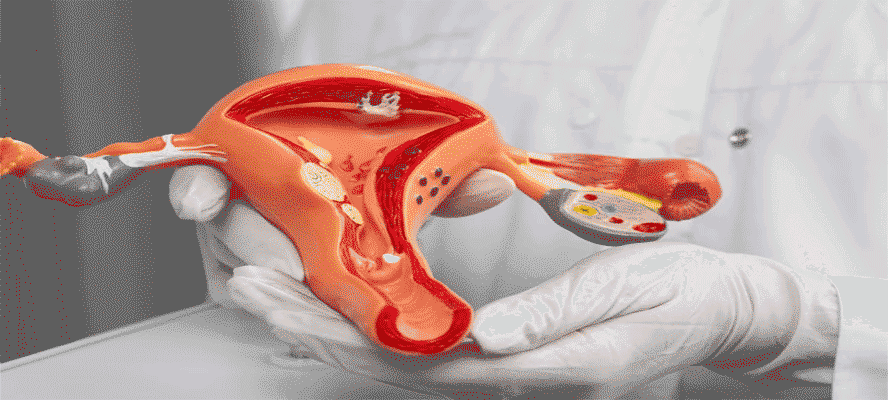What is Ovarian Cancer
Ovarian cancer is a type of cancer that develops in the ovaries, which are female reproductive organs that produce eggs. This type of cancer is often referred to as the “silent killer” because it usually does not show any early symptoms. It can affect one or both ovaries and can spread to other parts of the body if left untreated. There are different types of ovarian cancer, such as epithelial ovarian cancer, germ cell ovarian cancer, and stromal ovarian cancer, each with its unique characteristics and treatment options.
Does Ovarian Cancer Affect Your Ovaries? Understand its Progression and Impact
Ovarian cancer can affect the ovaries, causing them to grow abnormally and form tumors. These tumors can spread to other parts of the body, such as the lymph nodes and abdominal organs, causing further damage. The progression and impact of ovarian cancer depend on the stage of cancer, which is determined by the size and location of the tumor, as well as whether it has spread to other parts of the body.
The progression of ovarian cancer can be divided into four stages based on how far cancer has spread:
- Stage 1: The cancer is confined to one or both ovaries.
- Stage 2: The cancer has spread to other pelvic organs, such as the uterus, fallopian tubes, or bladder.
- Stage 3: The cancer has spread beyond the pelvis to the abdominal lining or lymph nodes.
- Stage 4: The cancer has spread to other parts of the body, such as the liver, lungs, or brain.
Types of Ovarian Cancer and their Symptoms
There are several types of ovarian cancer, and the ovarian cancer signs can vary depending on the type. The most common types of ovarian cancer are:
1. Epithelial ovarian cancer: The most prevalent kind of ovarian cancer is epithelial, which starts in the cells that line the ovary’s surface. Epithelial ovarian cancer symptoms can include:
- Difficulty eating or feeling full quickly
- Increased urination frequency
- Fatigue
- Constipation
- Unexplained weight gain or loss
2. Germ cell ovarian cancer: The cells that create eggs are where this particular type of ovarian cancer grows. The following are possible signs of Germ cell ovarian cancer:
- Abdominal pain or swelling
- Nausea or vomiting
- Feeling a mass or lump in the abdomen
- Irregular menstrual periods
- Changes in the breast
3. Stromal cell ovarian cancer: This form of ovarian cancer arises in the hormone-producing cells. The following are possible signs of stromal cell ovarian cancer:
- Abdominal pain or swelling
- Irregular menstruation
- Unexpected vaginal bleeding
- Changes in the breast
- Hair loss or excessive hair growth
- Masculinization
Understanding the Ovarian Cancer Symptoms and What Triggers Them
The early symptoms of ovarian cancer are often subtle and easily overlooked. Some of the triggers that may cause these symptoms to include hormonal imbalances, inflammation, and genetic mutations. Understanding these triggers and the symptoms they cause can help individuals recognize the early warning signs of ovarian cancer and seek medical attention.
Common Early Warning Signs of Ovarian Cancer
Early detection of ovarian cancer might be challenging because the disease’s signs can be hazy and simple to ignore. However, there are some early warning signs that women should be aware of, including:
- Abdominal bloating or swelling
- Changes in bowel habits, such as constipation or diarrhea
- Feeling full quickly or having difficulty eating
- Pelvic pain or discomfort
- Back pain
- Urinary urgency or frequency
- Fatigue or low energy levels
- Abnormal vaginal bleeding or discharge
Ruptured Ovarian Cyst Symptoms: Ovarian cysts are fluid-filled sacs that form on the ovary; they are often benign and disappear on their own. Nonetheless, a cyst can occasionally get enormous, and, very rarely, it might rupture, resulting in excruciating pain and other symptoms.
The fluid that is trapped inside an ovarian cyst ruptures, irritating the lining of the abdomen. Bloating, nausea, and vomiting may also occur together with sudden, severe pain in the lower abdomen or pelvis. In some situations, a ruptured cyst might also result in a fever or dizziness.
It’s crucial to keep in mind that similar symptoms can also be brought on by other, less severe illnesses. A doctor should be seen for an assessment if any of these symptoms last longer than two weeks. Women who have a family history of ovarian cancer or specific genetic variations may also be more susceptible to developing ovarian cancer; as such, they should talk to their doctor about the best course of action for screening.
Ovarian Cancer Risk Factors
- Lifestyle Factors: Several lifestyle factors can increase the risk of ovarian cancer, such as smoking, a diet high in fat and low in fruits and vegetables, and exposure to asbestos.
- Family History and Genetics: Women who have a family history of ovarian cancer, breast cancer, or colorectal cancer may have a higher risk of developing ovarian cancer. Genetic mutations such as BRCA1 and BRCA2 also increase the risk of ovarian cancer.
- Personal history: Ovarian cancer risk may be increased in women who have had breast, cervical, or colorectal cancer.
- Age and Gender: Women over the age of 50 are more likely to develop ovarian cancer. Additionally, women who have never given birth or have infertility problems may also have a higher risk of ovarian cancer.
- BRCA mutations: Women with inherited mutations in the BRCA1 or BRCA2 genes have a significantly higher risk of developing ovarian cancer.
- Endometriosis: Ovarian cancer risk is higher in women who have endometriosis, a disorder in which uterine tissue protrudes outside of the uterus.
- Obesity: Women who are fat or overweight are more likely to get ovarian cancer.
- Hormone therapy: Ovarian cancer risk may be somewhat elevated in women who have received oestrogen replacement therapy for a long time.
- Additional Health Factors for Pancreatic Cancer: Other health conditions, such as polycystic ovary syndrome (PCOS), and Lynch syndrome, may also increase the risk of ovarian cancer.
Ways to Manage Ovarian Cancer and Its Associated Risks
There are several ways to manage and reduce the risks of ovarian cancer, such as maintaining a healthy lifestyle, undergoing regular full-body checkups, and considering prophylactic surgery for high-risk individuals. Women with a family history of ovarian cancer or genetic mutations may consider genetic counseling and testing to assess their risks and make informed decisions about their health.
Ovarian cancer is a deadly disease that affects thousands of women worldwide. While it is often referred to as the “silent killer” due to its lack of early symptoms, it is crucial to understand the signs and risk factors associated with this type of cancer. By recognizing the early warning signs of ovarian cancer and seeking medical attention, individuals can increase their chances of early detection and successful treatment.
It is also essential to understand the various risk factors associated with ovarian cancer, including lifestyle factors, family history, and genetics. By managing these risk factors and adopting healthy habits, individuals can reduce their risk of developing ovarian cancer.
Overall, understanding ovarian cancer symptoms, risk factors, and prevention methods is crucial in the fight against this deadly disease. With early detection, proper treatment, and lifestyle modifications, we can work together to reduce the impact of ovarian cancer and save lives.
BOOK AT HOME LAB TEST TODAY!







